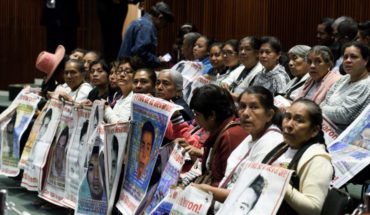
In recent decades, several cases of corruption have become visible that have called into question the image of probity and public integrity that Chile presented in the Latin American context. Although corruption has affected various institutions at the national level, local governments have become a highly vulnerable space for the occurrence of such acts. The so-called “garbage”, “main”, “luminaries” and drug trafficking networks discovered within the Municipality of San Ramon are just some examples that account for this.
The concern about this phenomenon is due not only to the loss of public resources, but also to the negative consequences it has for political stability, as it increases the crisis of legitimacy and the levels of distrust towards the country’s democratic institutions. However, in our research in the municipalities of the macro-southern zone (FONDECYT “Social links and corruption in the local public context: the coexistence of the formal and informal) we have discovered other dimensions that allow us to explain in a more comprehensive way the functioning of corruption at the local level; moreover, within the local bureaucracies coexist, along with the formal processes, practices, rules and informal networks that are used by various actors to obtain not only material goods but also favors, information, procedures, etc., many actions that remain in a gray area between what is and what is not corruption.
Corruption is generally understood as an illegal, individual and economic-oriented practice (Anders & Nuijten, 2008). This has been mainly influenced by legal and economic perspectives, as both have consolidated a particular conception of corruption focused exclusively on the rational and intentional nature of such acts.
As a consequence of this, corruption is considered as a problem attributed to individuals acting motivated by selfish interests whose purpose is to obtain advantages and/or personal gain. Therefore, proposals to combat it focus on increasing sanctions or strengthening control mechanisms, but very little has been discussed about the social dynamics that sustain and reproduce them.
First of all, corruption is not only an individual act, but acts that involve the participation of a plurality of actors. Corruption needs coordinated actions that can successfully circumvent the formal controls and processes that exist within local governments. At the same time, it does not necessarily seek economic benefits, but also seeks to achieve intangible assets such as prestige, labour protection, contacts, the acceleration of bureaucratic processes, information on competitions, etc.
In other words, corruption is based on social networks that permeate local bureaucracies and that are installed as an organizational mechanism within municipalities (Ashforth & Anad, 2003; Mujica, 2005) which, although it may be illegal, is legitimized by the different actors who make use of it within local governments and which even makes it possible to resolve certain management problems.
These networks are also based on personal relationships where loyalty and trust are central elements for their configuration. Thus, the relational dimension of corruption is fundamental to understanding how it works.
A second aspect to highlight is the informal dimension of corruption. In local contexts, formal institutions coexist with informal institutions and logics. That is, formal bureaucratic procedures coexist with traditions, rules, norms and practices that interact with the former. These informal practices operate in many areas, but it is in contexts of low statehood that they seem to have the greatest relevance. A low statehood can be understood as the limited capacity of the State to provide basic services in a given territory (Luna & Soifer, 2017).
Araucanía, for example, is a region that presents a large number of communes with a low level of statehood (LAPOP, 2012) and where we have found a variety of informal practices, for example, the importance of patronage to recruit public officials in municipalities avoiding regulated procedures. Municipalities offer less precarious and more stable job opportunities, so corruption can become aa valid strategy for accessing opportunities that cannot be obtained by following formal procedures. It is important to discuss whether drug trafficking networks or other illegal organizations can also play this role, especially in spaces where state capacity is low.
Likewise, corruption is interspersed with other practices such as clientelism, nepotism and patronage, practices that are also present in local spaces and that are on the margins of legality. In addition, the mechanisms of operation between these phenomena are similar, which makes the distinction between these practices a challenge for both their control and their sanction. Moreover, these practices complement each other and go so far as to establish mutually beneficial relationships, for example, corruption networks can facilitate patronage practices, especially during election campaign periods.
Thirdly, there are different degrees of tolerance for corruption depending on the situation in which the actors find themselves at the local level, since when corruption is close and favors a collective, the level of legitimacy is higher, but when it is distant and favors a minority, the legitimacy is lower.
Therefore, the factors that explain the disclosure of corruption are related to the degree of tolerance that people have over this type of practice, which puts in tension the normative-legal framework of each context. It is also common to encounter cases in which the law punishes or prohibits certain acts, but society also accepts them on a practical level. In this sense, corrupt practices are evaluated in a differential way, since they do not always receive the same assessment judgment (tolerance, justification and condemnation).
These three dimensions of corruption, the relational, the informal and its degrees of legitimacy, are relevant to understanding the phenomenon of corruption and helping to implement mechanisms that not only control it, but also help prevent it. Hence, it is important to understand corruption not only as a legal phenomenon, but also as a social phenomenon, especially in the local space, since municipalities are the government body closest to the people and in which they trust the most to achieve the solution to their daily problems.
Emilio Moya Díaz, Associate Professor Department of Sociology, Political Science and Public Administration, Catholic University of Temuco and Daniel Paillama Raimán, Sociologist, Catholic University of Temuco.
The content of this opinion column is the sole responsibility of its author, and does not necessarily reflect the editorial line or position of El Mostrador.





